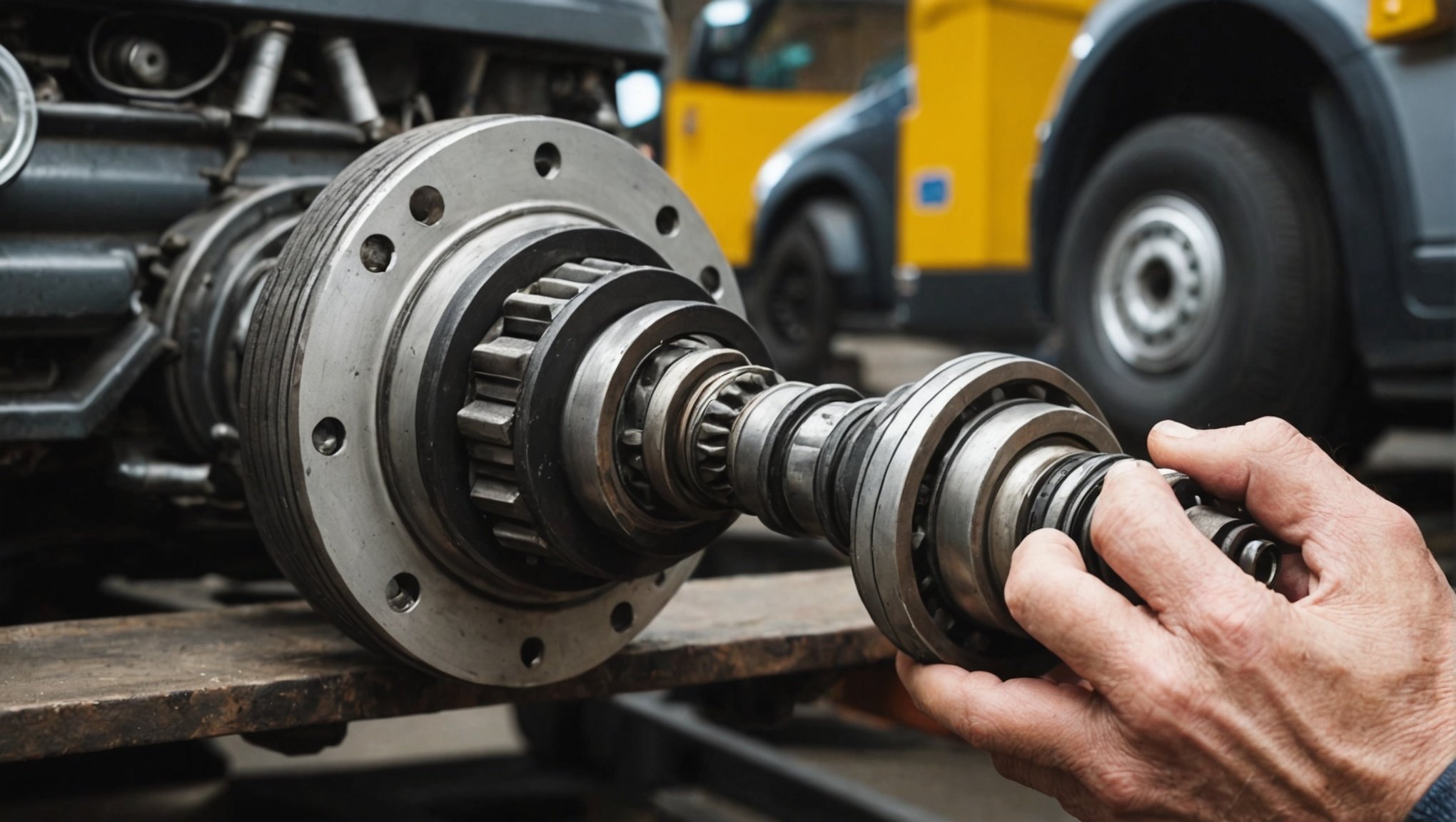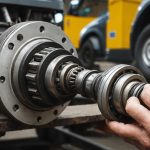Maintaining the longevity and safety of a vehicle’s Constant Velocity (CV) joints is crucial for vehicle performance and driving experience. CV joints are pivotal components that ensure smooth and effective power transmission from the transmission system to the wheels. They enable the drive shafts to transmit power at a constant rotational speed without significant friction. Regular maintenance, timely repairs, and understanding the signs of wear can prevent costly repairs and enhance the overall performance of your vehicle.
Understanding the Importance of CV Joints
CV joints are integral to the functioning of many modern vehicles, especially those with front-wheel drive, rear-wheel drive, or all-wheel drive systems. These joints allow the drive shaft to transmit power to the wheels while accommodating the up-and-down motion of the suspension and the steering action of the front wheels. The constant velocity mechanism ensures that the wheels receive a steady and uniform transmission of power, which is essential for smooth driving.
Also to see : How can you ensure that your vehicle’s parking assist system works accurately in tight UK parking spaces?
Regular maintenance of CV joints is critical in preventing issues such as joint wear, boot damage, and axle problems. Neglecting these components can lead to driving issues, such as unusual noises, vibrations, and even loss of vehicle control. In extreme cases, failing CV joints can cause the wheel to disengage from the axle, leading to dangerous driving conditions and potential accidents.
To safeguard your driving experience and ensure the safety of your vehicle, it is crucial to understand how to maintain CV joints, recognize signs of wear, and take preventive measures against damage. This article explores the essential steps to maintain the longevity and safety of your vehicle’s CV joints.
Also read : Can installing a backup camera reduce accidents in urban UK environments?
Regular Inspections and Maintenance
One of the most effective ways to maintain the health of your CV joints is through regular inspections and maintenance. Routine checks can help identify potential issues early, preventing more significant problems and costly repairs. Here’s what you should look for during your inspections:
-
Inspect the CV Joint Boot: The CV joint boot, also known as the CV boot, is a rubber or plastic cover that protects the CV joint from dirt, debris, and moisture. A damaged or torn boot can expose the joint to contaminants, leading to accelerated wear and potential failure. Check the CV boots regularly for cracks, tears, or leaks. If you notice any damage, it’s essential to replace the boot immediately to prevent further damage to the joint.
-
Check for Grease Leaks: CV joints are lubricated with grease, which is essential for reducing friction and wear. Inspect the area around the CV joints and boots for signs of grease leaks. Leaking grease can indicate a damaged boot or joint, which requires immediate attention. Replacing the grease and repairing any damage can help maintain the performance of your CV joints.
-
Listen for Unusual Noises: Pay attention to any unusual noises while driving, such as clicking, popping, or clunking sounds, especially when turning or accelerating. These noises can indicate a failing CV joint and should be addressed promptly. Ignoring these sounds can lead to more severe damage and potentially unsafe driving conditions.
-
Evaluate Driving Conditions: Your driving habits and the conditions you drive in can significantly impact the lifespan of your CV joints. Driving on rough or uneven terrain, excessive cornering, and aggressive driving can increase wear on the CV joints. Understanding and adapting your driving habits can help prevent unnecessary stress and damage to these components.
Regular maintenance and service of your vehicle, including checking the CV joints, can significantly extend their lifespan and ensure the safety and reliability of your vehicle.
Recognizing Signs of Wear and Tear
Identifying the signs of CV joint wear and tear is crucial for timely maintenance and repair. Being aware of these signs can help you take action before the situation worsens, preventing costly repairs and ensuring the safety of your vehicle. Here are some common signs of CV joint wear and tear:
-
Clicking or Popping Noises: One of the most common indications of a worn CV joint is a clicking or popping noise, especially when turning. This noise is caused by the joint’s inability to maintain a constant velocity as it rotates, leading to uneven movement. If you hear clicking or popping sounds while driving, it’s advisable to have your CV joints inspected by a professional.
-
Grease on the Tires: If you notice grease splattered on the inside of your tires or wheel wells, it could indicate a damaged CV boot. The grease leaks out of the joint and gets flung onto the surrounding areas as the axle rotates. This is a clear sign that the CV boot is compromised and needs immediate attention.
-
Vibration While Driving: Excessive vibration or shuddering while driving can indicate a failing CV joint. This vibration is usually felt through the steering wheel or the vehicle’s floor and is more pronounced during acceleration. Addressing this issue promptly can prevent further damage to the axle and other drivetrain components.
-
Difficulty Steering: A worn CV joint can affect your ability to steer the vehicle smoothly. If you experience difficulty turning the steering wheel or notice a grinding sensation while steering, it could be due to a damaged CV joint. Proper inspection and repair are necessary to restore the vehicle’s steering performance.
Recognizing these signs and taking immediate action can prevent further damage and ensure the safety and reliability of your vehicle’s drivetrain.
The Process of Joint Replacement
When CV joints show significant wear or damage, joint replacement is often necessary to restore the vehicle’s performance and safety. Understanding the replacement process can help you make informed decisions and ensure that the repair is done correctly. Here’s an overview of the CV joint replacement process:
-
Diagnosis and Assessment: The first step in the replacement process is diagnosing the extent of the damage. A professional mechanic will inspect the CV joints, boots, and axles to determine the severity of the wear and identify any other related issues. This assessment helps in planning the replacement and ensuring that all necessary repairs are addressed.
-
Removing the Damaged Joint: Once the diagnosis is complete, the damaged CV joint is carefully removed. This involves disassembling the axle and disconnecting the joint from the drive shaft. The mechanic will take care to avoid causing further damage to surrounding components during this process.
-
Installing the New Joint: The new CV joint is installed in place of the damaged one. This includes securely attaching the joint to the axle and ensuring that it is properly aligned. The mechanic will also replace the CV boot and apply fresh grease to ensure optimal lubrication and protection.
-
Reassembly and Testing: After the new joint is installed, the axle is reassembled, and all components are securely fastened. The mechanic will then test the vehicle to ensure that the new CV joint is functioning correctly and that there are no unusual noises or vibrations. This testing phase is crucial to confirm that the replacement has been successful and that the vehicle’s performance is restored.
Joint replacement is a complex process that requires professional expertise. Ensuring that the replacement is done by a qualified mechanic can prevent further issues and maintain the safety and performance of your vehicle.
Preventive Measures to Avoid Damage
Taking preventive measures to avoid damage to your CV joints can significantly extend their lifespan and maintain the overall health of your vehicle’s drivetrain. Here are some effective strategies to prevent CV joint damage:
-
Regular Maintenance: Regular maintenance is key to preventing CV joint damage. Schedule routine inspections and servicing with a professional mechanic to ensure that your CV joints, boots, and axles are in good condition. Regular maintenance can help identify and address potential issues before they escalate.
-
Avoid Harsh Driving Conditions: Driving on rough or uneven terrain, excessive cornering, and aggressive driving can increase wear on your CV joints. Whenever possible, avoid harsh driving conditions and adopt smoother driving habits to reduce stress on these components.
-
Monitor Boot Condition: The CV boot plays a critical role in protecting the joint from contaminants. Regularly inspect the boot for cracks, tears, or leaks, and replace it immediately if any damage is found. A well-maintained CV boot can significantly extend the lifespan of the joint.
-
Address Issues Promptly: If you notice any signs of CV joint wear or damage, such as unusual noises, vibrations, or grease leaks, address them promptly. Delaying repairs can lead to more severe damage and potentially unsafe driving conditions.
-
Use Quality Parts: When replacing CV joints or boots, use high-quality parts from reputable manufacturers. Quality parts ensure better performance, reliability, and longevity, reducing the likelihood of future issues.
By taking these preventive measures, you can avoid damage to your CV joints and maintain the safety and performance of your vehicle.
Maintaining the longevity and safety of your vehicle’s CV joints is essential for a reliable and safe driving experience. Regular inspections, recognizing signs of wear, timely joint replacement, and taking preventive measures are crucial steps to ensure the health of your CV joints. These actions can prevent costly repairs, enhance vehicle performance, and provide peace of mind while driving.
By staying vigilant and proactive, you can protect your vehicle from potential issues and enjoy a smooth and safe ride. Remember, the longevity and safety of your vehicle’s CV joints depend on regular maintenance and timely repairs. Take these steps seriously, and you’ll ensure that your vehicle remains in top condition for years to come.











